‘The role of a creative leader is not to have all the ideas; it’s to create a culture where everyone can have ideas and feel that they’re valued.’*
We couldn’t agree more. There are certain practices that should be encouraged when creating a culture where ideas flow freely, happily and without fear of judgment. They can become everyday habits and can also be encouraged to flourish in others too. Here we explore fifteen great examples. We’d love to hear yours too. Share your ideas!
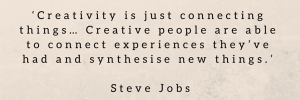 CONNECT THE DOTS. Making connections between two seeming unrelated experiences is a proven way to stretch creative muscles and allow your conscious to be open to different ideas. People who consistently have great ideas are particularly good at making unusual connections.
CONNECT THE DOTS. Making connections between two seeming unrelated experiences is a proven way to stretch creative muscles and allow your conscious to be open to different ideas. People who consistently have great ideas are particularly good at making unusual connections.- THINK POSITIVELY. Don’t be quick to dismiss an initial idea as impossible. Think about why it would work, rather than why it wouldn’t.
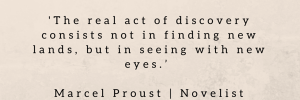 CHANGE YOUR PERSPECTIVE. Take a problem and look at it with a different filter, a fresh view. Reframe it. Explore other industries, cultures and practices to seek inspiration and use your findings to generate new ways of approaching the issue.
CHANGE YOUR PERSPECTIVE. Take a problem and look at it with a different filter, a fresh view. Reframe it. Explore other industries, cultures and practices to seek inspiration and use your findings to generate new ways of approaching the issue.- OBSERVE. Embrace the anthropologist persona. Pay close attention to the world around you. Learn from others by observing them intently because sometimes a breakthrough idea is just one small insight away.
- COLLABORATE. Hang around with people outside your circle of friends/usual colleagues. Make a point of mingling with people who are different to you to get new perspectives. We’re currently working with a client on a campaign that encourages employees to lunch with someone new. We love that idea!
- COLLECT STORIES. Have a file where you store compelling narratives from real life situations so you become more aware of unique and actionable perspectives. Gathering other peoples’ meaningful experiences can provide an endless resource that will help you approach challenges through a different lens.
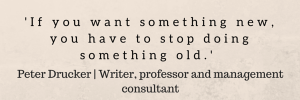 KEEP TRYING NEW THINGS. Doing things you’ve never done before will help you experience new ideas. Push yourself out of your comfort zone – at work, socially, personally. Try new foods, learn a new skill, or take up a different language. Expand your horizons to allow your brain to explore fresh and unfamiliar thought patterns.
KEEP TRYING NEW THINGS. Doing things you’ve never done before will help you experience new ideas. Push yourself out of your comfort zone – at work, socially, personally. Try new foods, learn a new skill, or take up a different language. Expand your horizons to allow your brain to explore fresh and unfamiliar thought patterns.- DON’T BE AFRAID TO LOOK SILLY. Take the lead from children – they are endlessly curious and they allow creativity to take hold. That’s when ideas happen. Be a little doolally from time to time.
- FIND YOUR GOLDILOCKS ZONE. Ambient noise levels are perfect for improving creative thinking. The Goldilocks Zone is where just the right amount of background noise can trigger our minds to think more creatively and generate more ideas. Whether that’s the right level of music, the low buzz of a coffee shop or one of the many ambient noise apps available. It’s about finding what works for you.
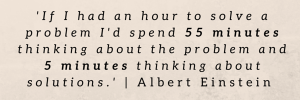 ‘WHAT IF??’ Ask more questions. Understand the problem by exploring it more. Learn to ask the questions that lead to the breakthrough ideas. And it’s not just a matter of being willing to question—it’s also important to know how to question. This article by Fast Companyexplores how innovation is driven by questions that are original, bold, counterintuitive, and perceptive.
‘WHAT IF??’ Ask more questions. Understand the problem by exploring it more. Learn to ask the questions that lead to the breakthrough ideas. And it’s not just a matter of being willing to question—it’s also important to know how to question. This article by Fast Companyexplores how innovation is driven by questions that are original, bold, counterintuitive, and perceptive.- RECONSIDER THE NORM. When people are comfortable with challenging the status quo it encourages an atmosphere of innovation. Make sure people know that it’s all right to ask why.
- MAKE SPACE FOR DOWN TIME. The greatest leaps of creativity tend to happen when you relax… in the bath, during sleep, gazing at the sky. Sometimes you have to just chill and let the grey matter get to work. Wander, rest, unwind, nap, sleep, relax, meditate. Because mental breaks replenish the brain, increase productivity, refresh attention and encourage creativity.
According to meditation app developers, Headspace, ‘In a 2012 study at Leiden University, Netherlands, scientists reported that “open monitoring” meditation (non-reactive observation of your thoughts over time) promoted “divergent thinking”, a type of thinking that allows many new ideas to be generated.’ 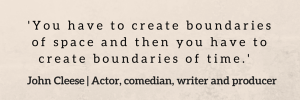 EMBRACE CONSTRAINTS. Contrary to popular belief, when we work with restrictions rather than trying to work around them, we can produce defined ideas and innovative work. Knowing how to work within constraints gives you something to wrap your mind around and can help achieve focus and progress.
EMBRACE CONSTRAINTS. Contrary to popular belief, when we work with restrictions rather than trying to work around them, we can produce defined ideas and innovative work. Knowing how to work within constraints gives you something to wrap your mind around and can help achieve focus and progress.- REDESIGN YOUR WORK ENVIRONMENT. Consider different colours, sights, pictures, objects and tools. Creating your own bespoke learning space blocks out distractions and helps to focus the mind. A work environment that’s conducive to creativitycan be the perfect breeding ground for new ideas.
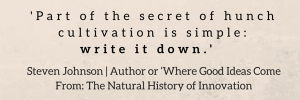 RECORD EVERYTHING. Have a system for writing down, collecting and accessing new ideas. When you have an idea, even the initial germ of one, record it in a central place, accessible by all. Encourage others to take and shape parts and put them together in different ways. According to Steven Johnson “The trick to having good ideas is not to sit around in glorious isolation and try to think big thoughts. The trick is to get more parts on the table.”
RECORD EVERYTHING. Have a system for writing down, collecting and accessing new ideas. When you have an idea, even the initial germ of one, record it in a central place, accessible by all. Encourage others to take and shape parts and put them together in different ways. According to Steven Johnson “The trick to having good ideas is not to sit around in glorious isolation and try to think big thoughts. The trick is to get more parts on the table.”
We can all have great ideas
Creative ideas aren’t reserved for the special ones or ‘naturally creative minds’; they can come to anyone. It’s all about mindset and an ability to think in new ways. Developing new habits and encouraging different practices can help enormously.
Of course, there will be dry spells when flow is interrupted. That’s perfectly naturally. The key is to stick with it and push through, remembering, maintaining and encouraging all those great new habits.
*Ken Robinson | Author, speaker and international advisor on education
















